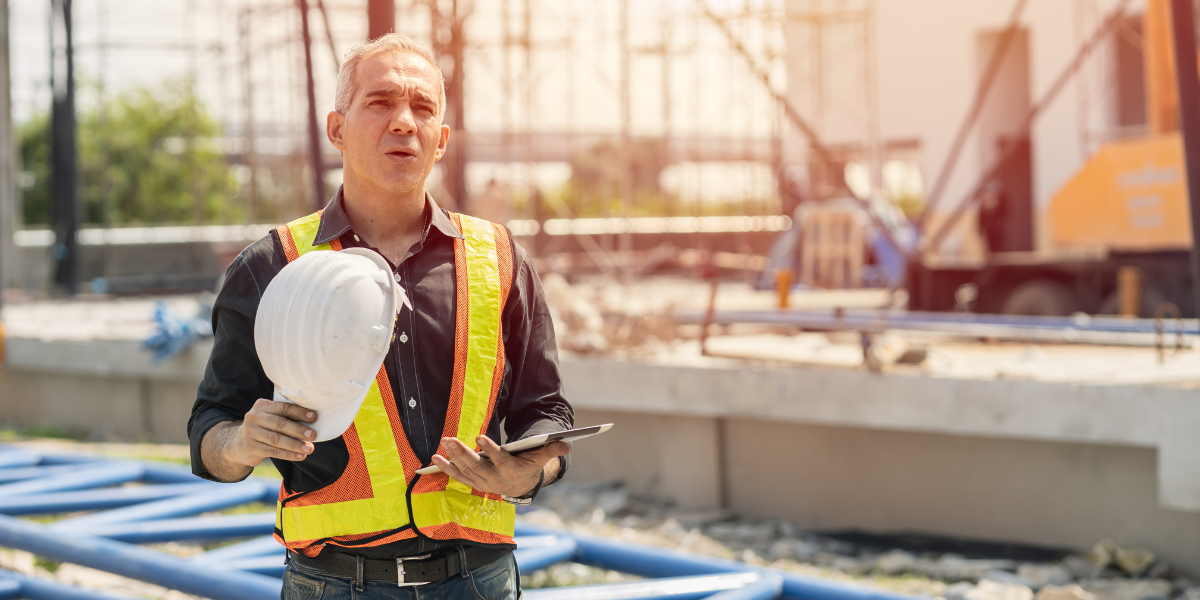-

Align Technologies | April 19 2024
Preventing Heat-Related Illness in Construction
One of the most pressing concerns during the warmer months is the risk of heat-related illness, which can have devastating consequences if not properly addressed. Heat-related illnesses, such as heat stroke, heat exhaustion, heat cramps, and heat rash, can be life-threatening if not promptly recognized and treated.
Construction workers are particularly vulnerable due to the physical nature of their work, exposure to direct sunlight, and lack of access to cooling mechanisms. Construction workers in North America, particularly those in certain high-risk occupations and demographics, face a significantly elevated risk of heat-related illness and death compared to the general workforce. This risk appears to be exacerbated by the impacts of climate change and rising temperatures.
Key statistics on heat-related illness in the construction industry in North America include:
- Between 1992 and 2016, 285 construction workers in the United States died from heat-related causes, accounting for over 36% of all occupational heat-related deaths in the country.(Centers for Disease Control and Prevention)
- The rate of heat-related death among construction workers was 1.13 per million, more than five times the rate of 0.22 per million for all workers. (National Library of Medicine)
- Occupations with a particularly high-risk index for heat-related deaths included cement masons (10.80), roofers (6.93), helpers (6.87), brick masons (3.33), construction laborers (1.93), and HVAC mechanics (1.60). (Research Gate)
- Hispanic workers, especially those born in Mexico, had a significantly elevated risk of heat-related death compared to all construction workers. (National Library of Medicine)
- Approximately 75% of the heat-related fatalities among construction workers occurred during the summer months of June, July, and August. (Centers for Disease Control and Prevention)
- Heat-related deaths among construction workers have shown an upward trend that corresponds with an increase in average summer temperatures over the same time period.
Facts and Guidance from OSHA
First, the facts:
- Heat stroke is the most serious heat-related illness and can be fatal if not treated immediately. Symptoms include confusion, fainting, seizures, and a body temperature above 104°F.
- Heat exhaustion is a milder form of heat-related illness that can lead to heat stroke if left untreated. Symptoms include heavy sweating, muscle cramps, headache, and nausea.
- Construction workers are at a higher risk of heat-related illness, with over 40% of heat-related worker deaths occurring in the construction industry.
- Factors that increase the risk of heat-related illness include high temperatures, direct sun exposure, physical exertion, and lack of hydration.
What can we do? Here are the best practices for prevention
- Provide adequate hydration
- Ensure workers have access to clean, cool drinking water and encourage them to drink small amounts frequently
- Implement cooling mechanisms
- Provide shaded or air-conditioned rest areas, and consider using cooling vests or other personal cooling devices to help workers lower their core body temperature.
- Train workers on heat illness prevention
- Educate workers on the signs and symptoms of heat-related illness and provide training on how to prevent and respond to these conditions.
- Monitor weather conditions and heat stress
- Stay informed about weather forecasts and heat advisories, and use tools like the Wet Bulb Globe Temperature WBGT index to assess the risk of heat stress and adjust work practices accordingly.
By implementing these best practices, construction companies can significantly reduce the risk of heat-related illness and keep their workers safe on the job site.
About Janan Guillaume
Janan Guillaume, VP of Product at Align Technologies, is a passionate, customer-first product professional and brings more than 17 years of experience building and leading product and engineering teams in a number of different industries and markets including healthcare, government, insurance and construction. She has led the strategy and execution for a number of product and technology initiatives from mobile applications to data-as-a-service and AI/ML. In her current role, Janan is on a mission to create effective B2B platform experiences and AI and ML products that streamline workflows and address new, key challenges faced by the construction industry.